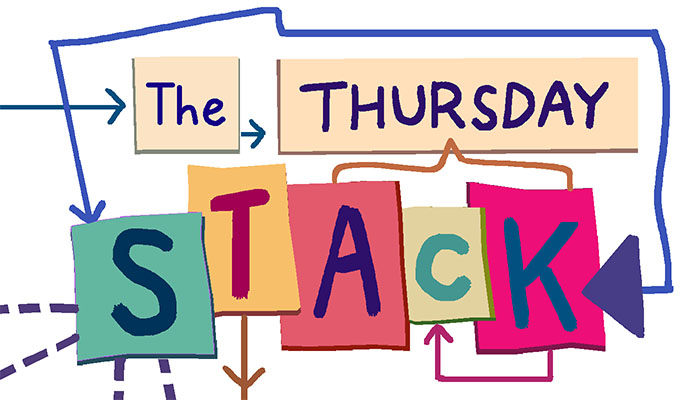We found a few news items steaming in the unbearable heat, a mix of launches and surveys. First up, here’s HubSpot, long known for offering a complimentary (yes, that’s free) CRM as part of its inbound marketing platform. Now it’s adding free email as well, including not only creation and sending, but analytics too. Oh wait, and Facebook, Google, and LinkedIn ad tools as well. In other words, users will be able to operate email and social marketing campaigns from within the CRM.
HubSpot describes this as “a big deal.” It’s also, of course, a shrewd bet on start-ups graduating to HubSpot’s paid marketing and sales offerings as their businesses grow.
**********
Next in line, conversational marketers Drift, also making noise in the email space. Yesterday they announced the launch of three new bots as part of their Siftrock B2B email solution: Lead Offer Bot, Lead Follow-Up Bot, and Lead Re-Engage Bot. Kind of self-explanatory, but Drift underlines the following advantages:
- All three bots will use machine learning capabilities to categorize responses to emails
- An autoresponder tool will be available to launch responses to the categorized emails
- The bots will integrate with execution platforms like Marketo, HubSpot, Eloqua, and Pardot, and update records automatically.
All in the good cause of personalization. Said founder and CEO David Cancel (in a release): “Today’s buyers expect a more personalized experience in email and beyond — and companies aren’t delivering. With the launch of these email bots, marketers can leverage AI and machine learning to encourage conversations and ultimately make buying easier.”
**********
We’ve covered PROS in the past, because we have a notion that an AI-powered price optimization solution is very relevant to marketing and sales operations. They’ve just shared the results of a global survey of more than 1,000 procurement and purchasing leaders, designed to shed light on digital buying trends. The headline, B2B buyers are looking for personalization (of course), speed, and intelligence when it comes to the purchase cycle. They’re also looking for self-service options.
Personalization (and PROS has skin in this game) means personalized pricing, of course, and B2B buyers are increasingly looking for that within an eCommerce experience. Two years ago, according to PROS, only 15 percent of buyers were completing most purchases on line; the figure has risen to 30 percent, and is set to rise further, say respondents. Interestingly, a majority of those surveyed (66 percent) expressed comfort with the idea that data-derived pricing, using AI to align price and value, is fair.
**********
And finally, as the dust settles from Prime Day… Over the last year, there were two days outside of the traditional year-end holidays where retailers took in over $2 billion in online sales in a single day: Labor Day 2018 and Memorial Day 2019. Add two more to that list: this past Monday and Tuesday. Adobe Analytics found that major retailers – not just Amazon – were winners during this week’s two-day Prime Day and related promotions. They saw an overall sales lift of 68 percent, over a typical Monday and Tuesday.
With last year’s Prime Day, smaller players took a hit with declining sales; this year, niche retailers saw a substantial lift of 28 percent over the two days. According to Adobe Analytics’ findings, a solid email strategy carried the day – 52 percent lift for those with an “excellent” email campaign, over 23 percent lift for those who lacked such a strategy. They also found that, sure, online visits increased due to comparison shopping; but many of those shoppers were ready to purchase, especially on the second day, which saw conversions accounting for 46 percent of the increase in revenue (49 percent of the sales lift was tied to higher traffic).
—
Chris Wood








